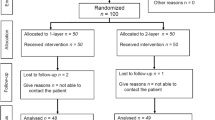Abstract.
Lichtenstein tension-free hernioplasty began in 1984. Based on our own mistakes, in the late 1980s, we established a set of key principles and reported the causes of our recurrences. Recently, other authors analyzing the causes of their own recurrences with tension-free repair are drawing the same conclusions. This indicates that others are repeating our previously reported mistakes. To prevent recurrence, the mesh size was increased to 7.5×15 cm to extend well beyond the boundary of the inguinal floor and give the mesh a dome-shaped laxity to compensate for the increased intra-abdominal pressure and mesh shrinkage. Wide extension of the mesh beyond the inguinal floor and the dome-shaped laxity of the mesh served to further reduce recurrence rate. Following the key principles of the Lichtenstein tension-free hernioplasty, which can be facilitated by using a recently developed prosthesis that addresses all the key principles of the procedure, achieves the best result.
Similar content being viewed by others
Author information
Authors and Affiliations
Additional information
Electronic Publication
Rights and permissions
About this article
Cite this article
Amid, .P. The Lichtenstein repair in 2002: an overview of causes of recurrence after Lichtenstein tension-free hernioplasty. Hernia 7, 13–16 (2003). https://doi.org/10.1007/s10029-002-0088-7
Received:
Accepted:
Issue Date:
DOI: https://doi.org/10.1007/s10029-002-0088-7




